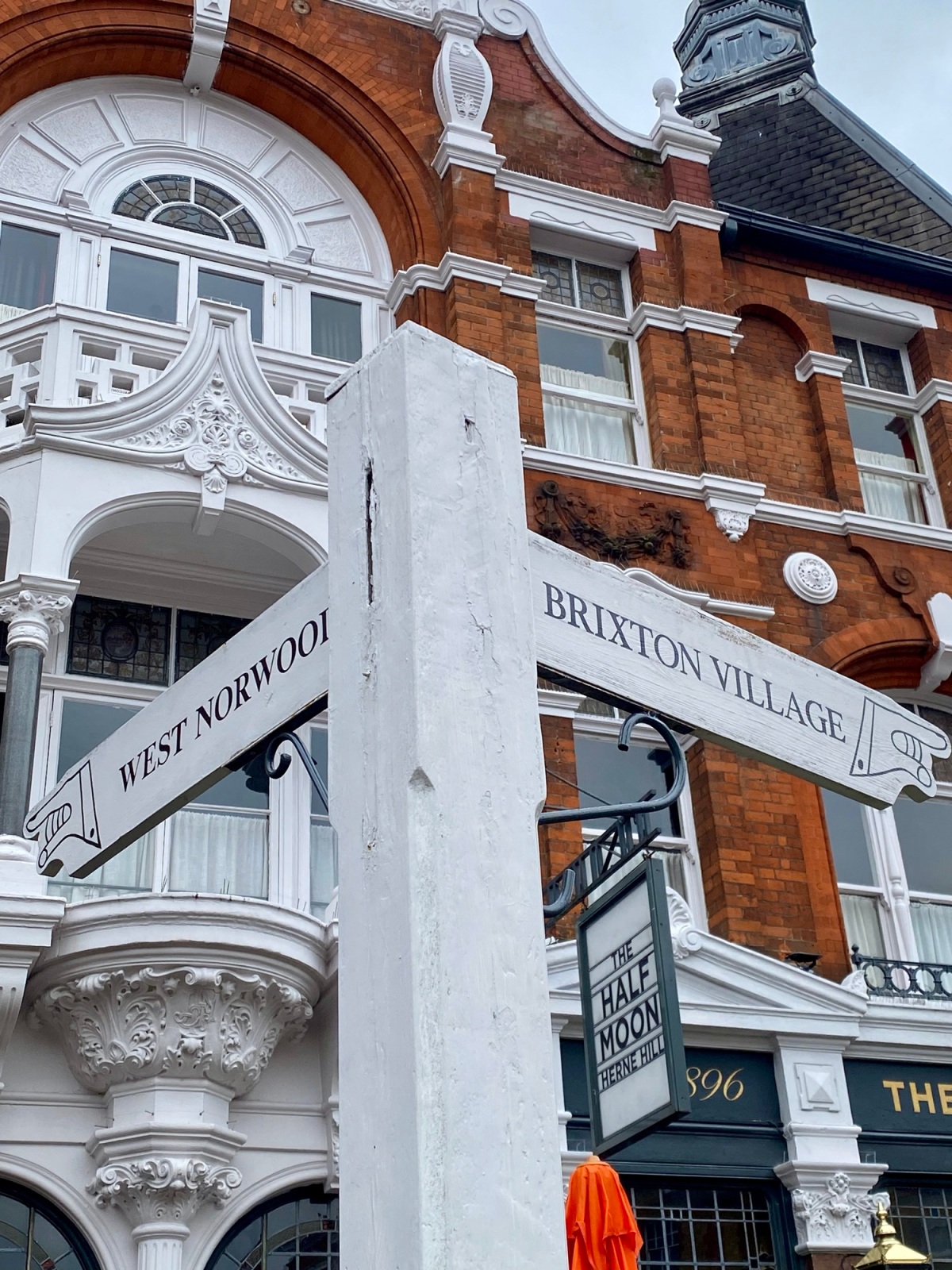From Victorian Pubs (1975), by Mark Girouard:
“…As the railways spread, the great stage-coach depots of Southwark, Holborn and St Martin’s fell into neglect and were gradually demolished, but new or enlarged pubs sprang up beside the stations.

The numerous different lines of horse-buses all had their depots at outer London pubs, which served as combined waiting and refreshment rooms for passengers and drivers, to the great gain of the publican.

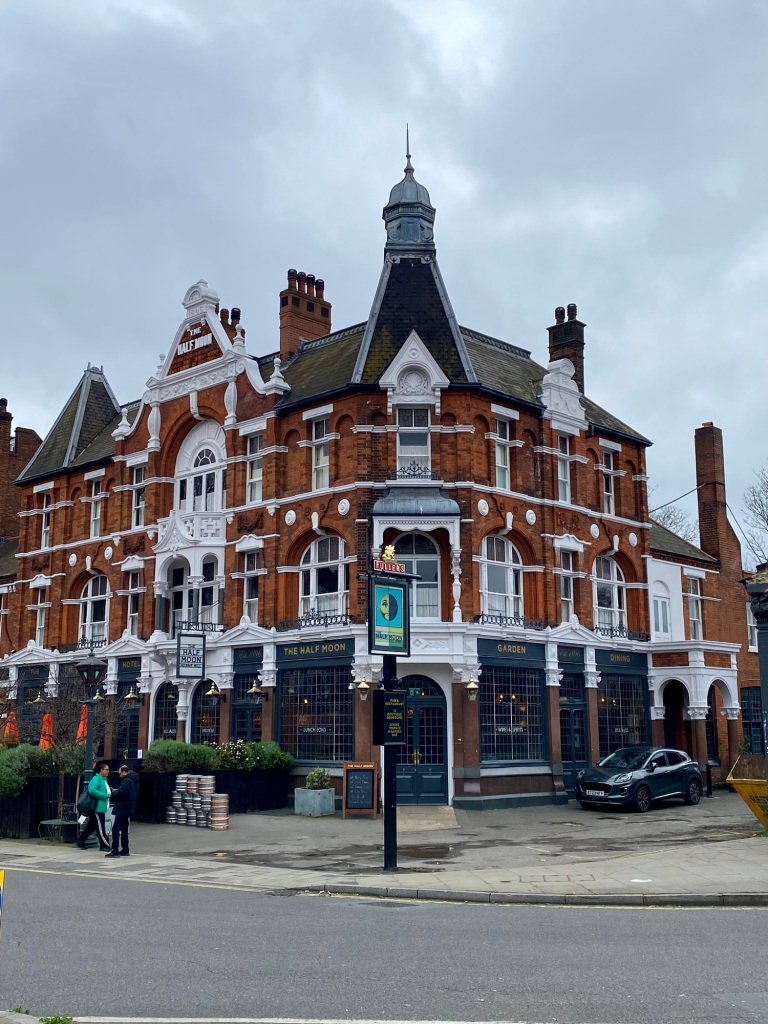
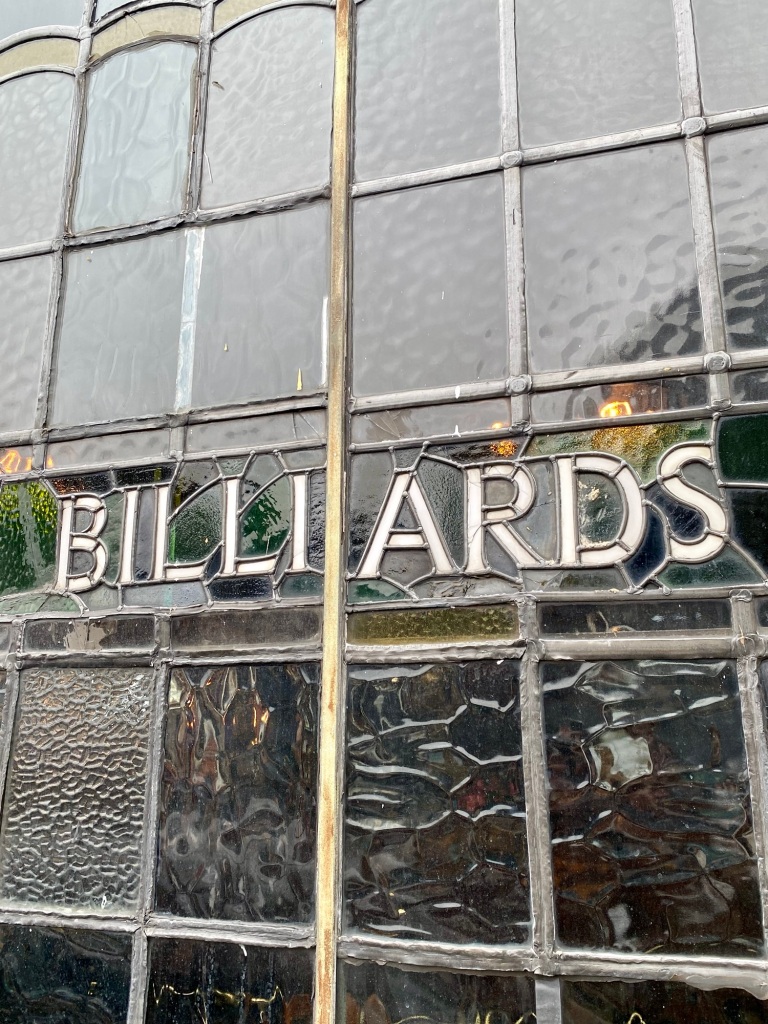
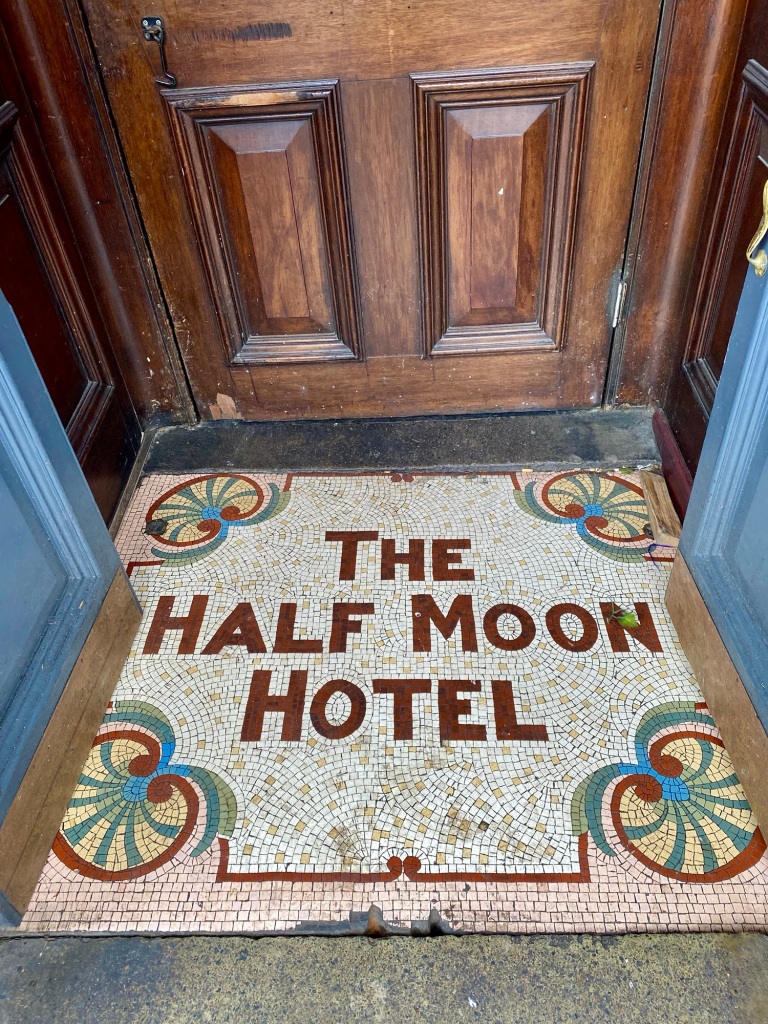
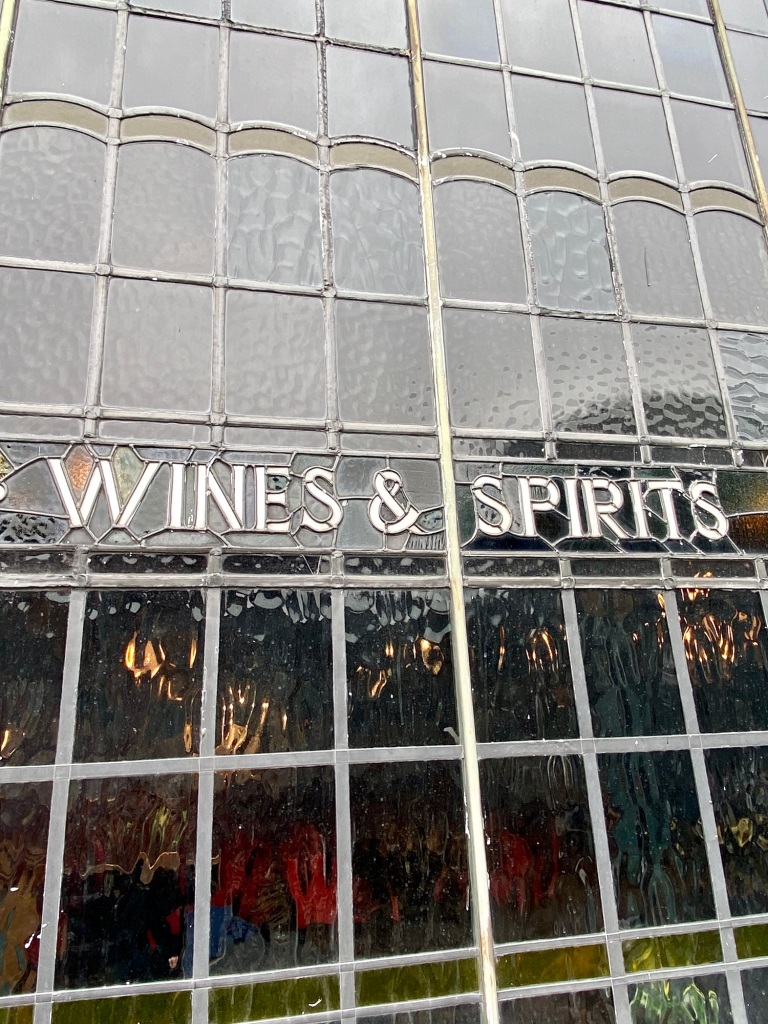
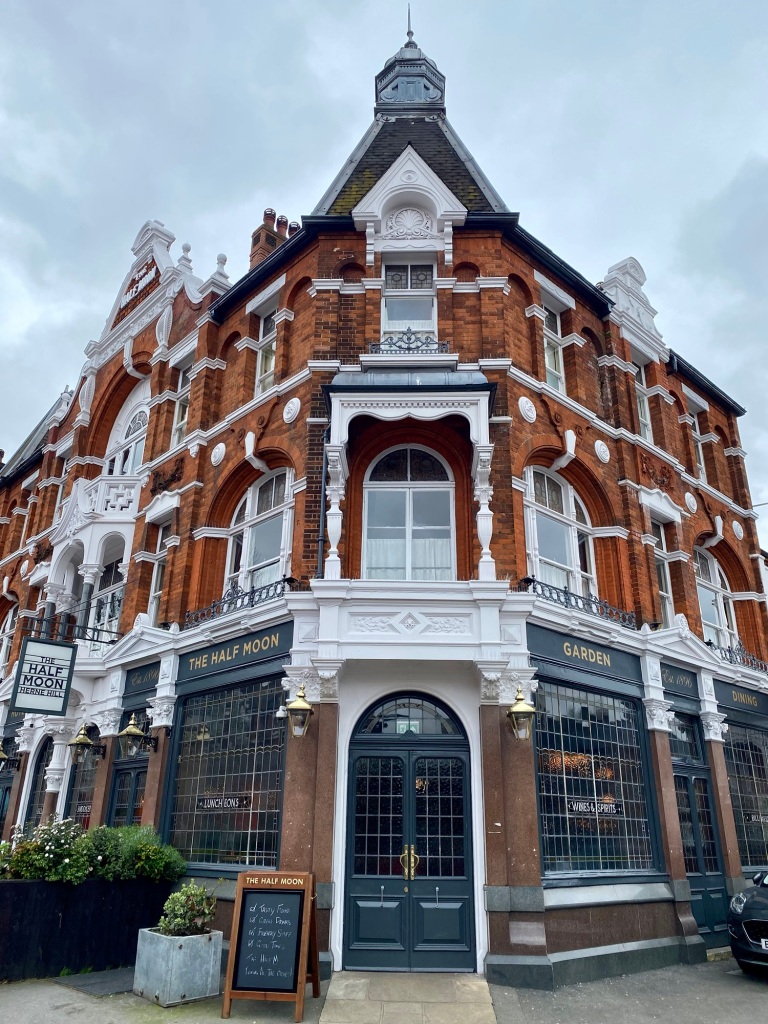
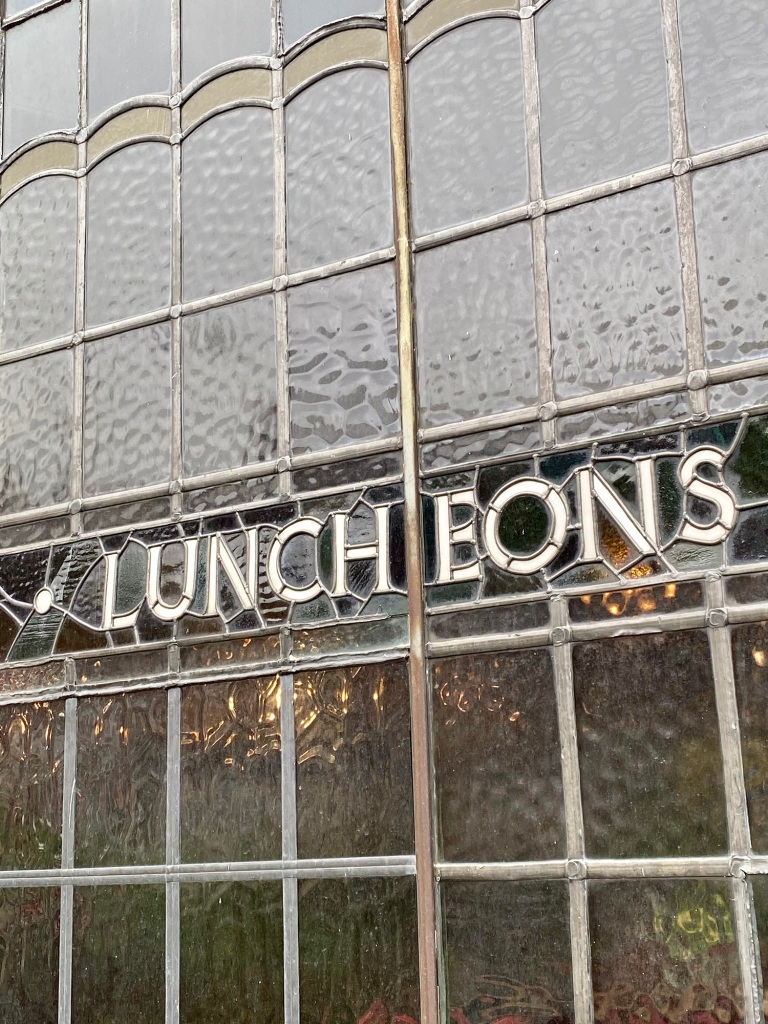

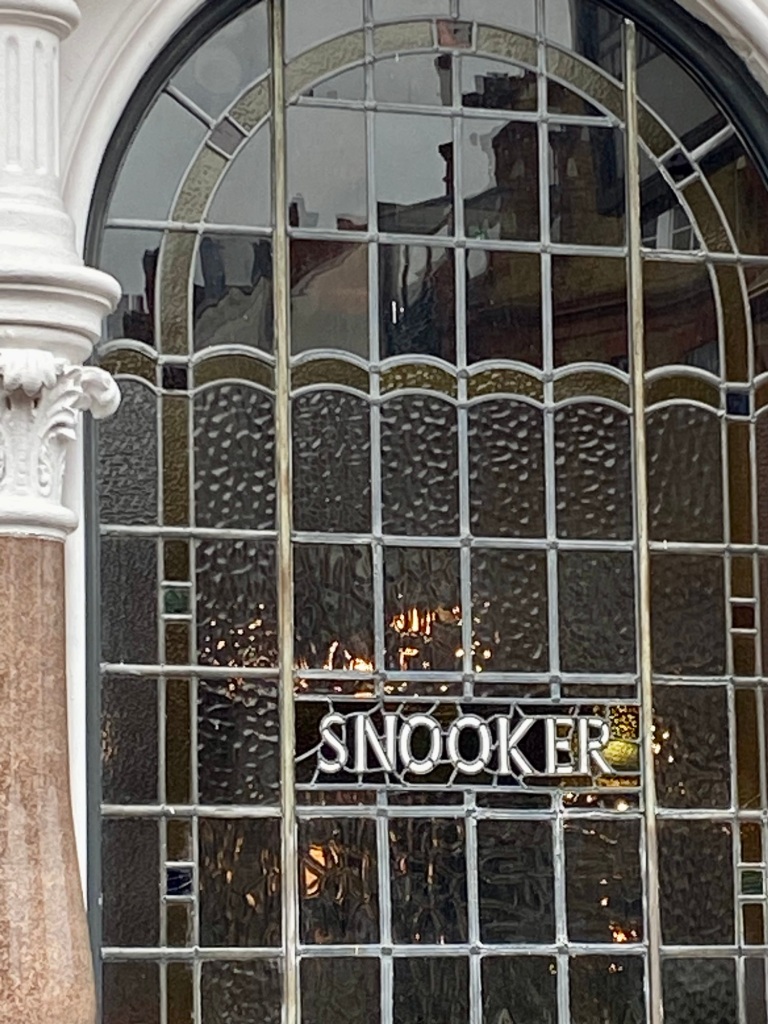
These forgotten termini often explain the richness of particular pubs…the Half Moon on Herne Hill, with its little wine bar glittering with painted mirror storks and bullrushes…
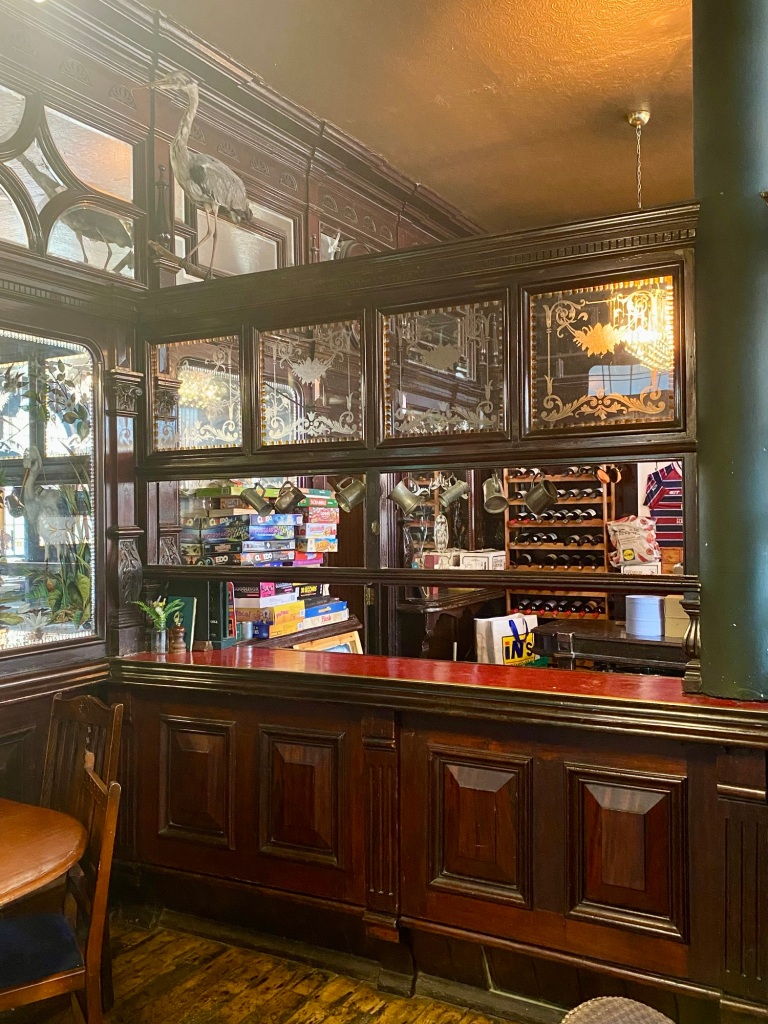
…Another RIBA pub architect, J. W. Brooker, of 13 Railway Approach, London Bridge, was given a fullish obituary in the RIBA Journal when he died in 1904. It gives the impression of a successful Fletcher: he was a non-conformist (he designed Penge Tabernacle) architect of south London villas (at Grove Vale, Dulwich, Herne Hill, Brockley and Lewisham) and an occupier of one himself (Durlstone, Brockley Park), with a small line in offices (around London Bridge and in Shoreditch) and a bigger line in pubs (twenty-one between 1877 and 1898). As tended to be the case at the time, the fact that he was an FRIBA did not mean that he was a higher class, or even a more literate, architect than the many architects who were not.
His work can be represented by an early example, the Yorkshire Grey, Theobald’s Road (1877),
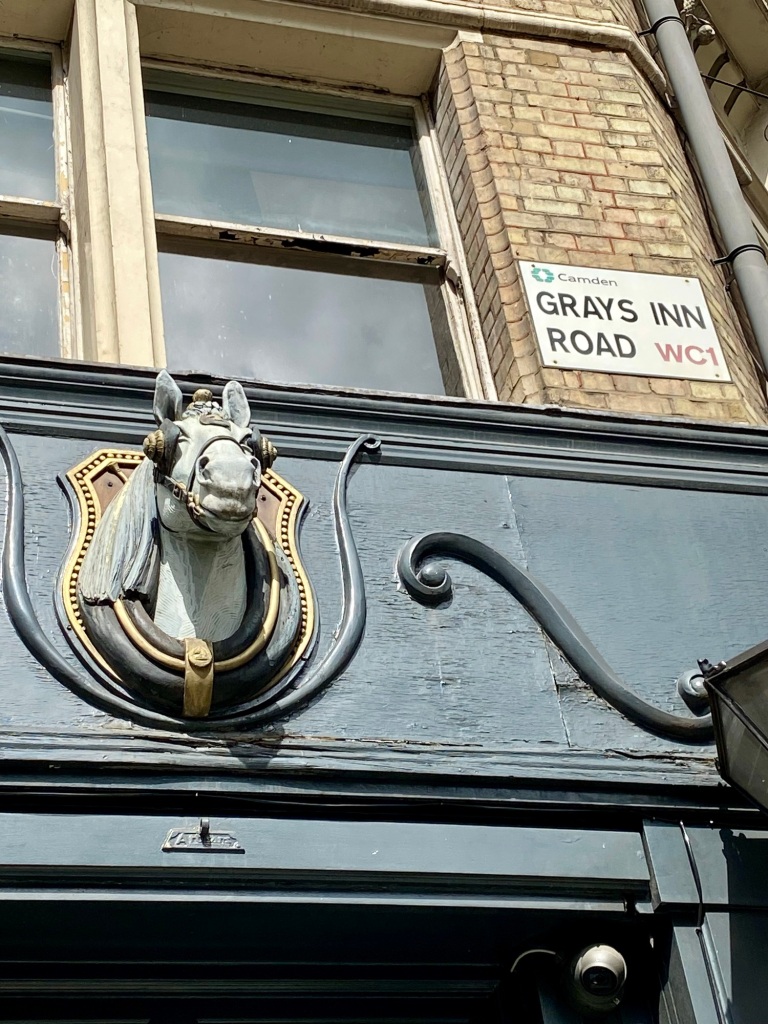
and a late one, the Half Moon, Herne Hill (1896), one bastard classical, the other ‘Queen Anne’ of the most commercial variety…
…Makers of pub glass flourished and proliferated in response to the fashion for their products. A number of firms deserve to be mentioned in addition to those already referred to. One of the best established businesses was that of Walter Gibbs (later Walter Gibbs and Sons), who claimed to have started up in 1861, but first appears in the Post Office Directory in 1866 as ‘Painter, writer and embosser on glass’ at 123 Union Street, Southwark. In the I870s the firm moved to works in the arches under the railway viaduct in Blackfriars Road, and in the 1880s opened a showroom in 2 Charlotte Street. After Walter Gibbs died in 1891 the business was carried on by his widow and sons. In 1893 they were said to have ‘quite recently … introduced an improved patented process of amber staining for French embossing and brilliant cutting’. A rich claret stain was also available, and examples can be seen in, for instance, the doors of the Elgin, Ladbroke Grove,

the Lord Nelson, Old Kent Road,
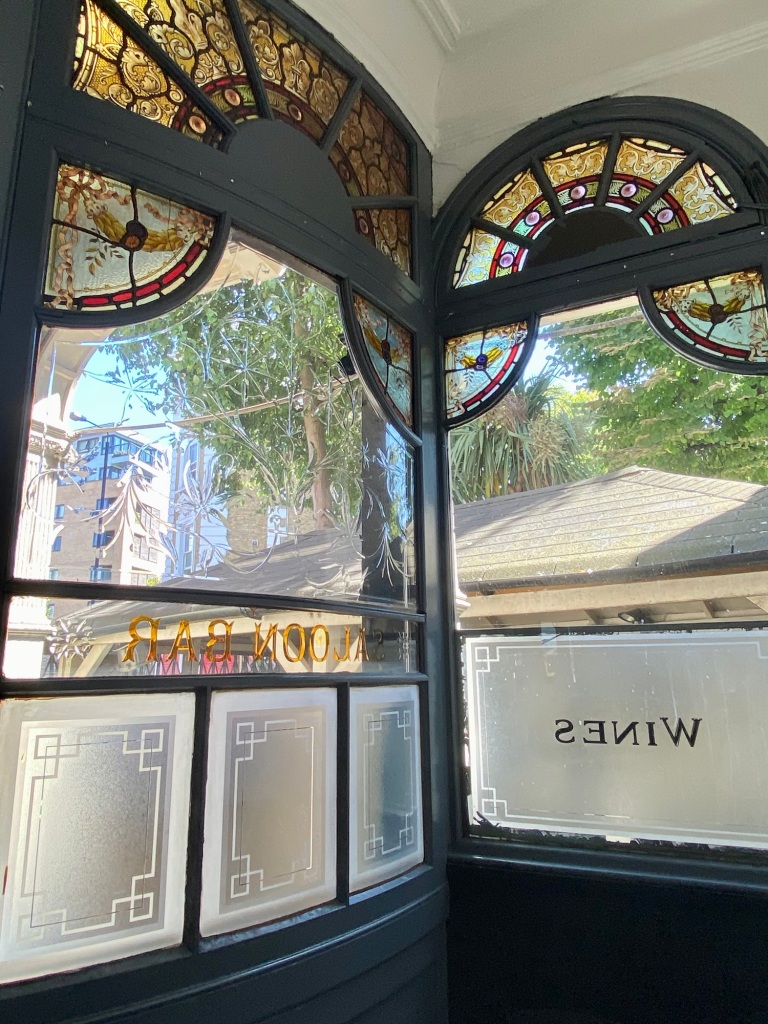
the Washington, Primrose Hill, and the Red Lion, Duke of York Street.

If Gibbs and Sons had a monopoly of their process it would suggest that they did glass at all these pubs and were also responsible for the superb mirrors at the Red Lion. The firm also supplied back-painted mirrors and their signed mirrors still line the wine bar at J. W. Brooker’s Half Moon, Herne Hill, of 1896.
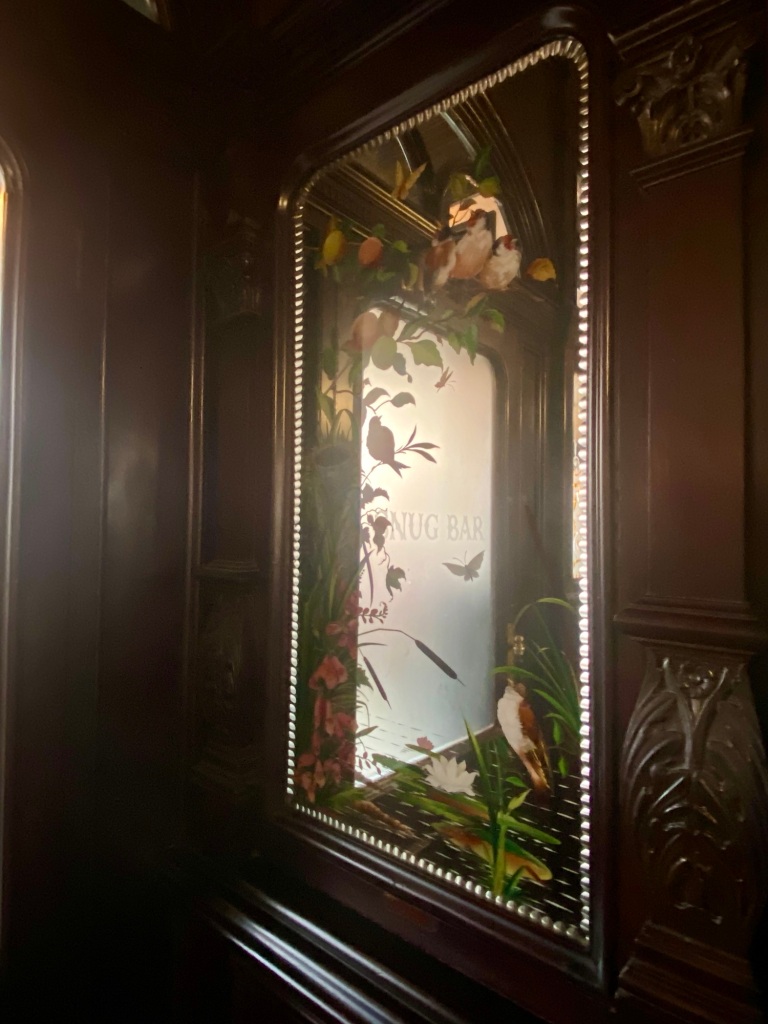
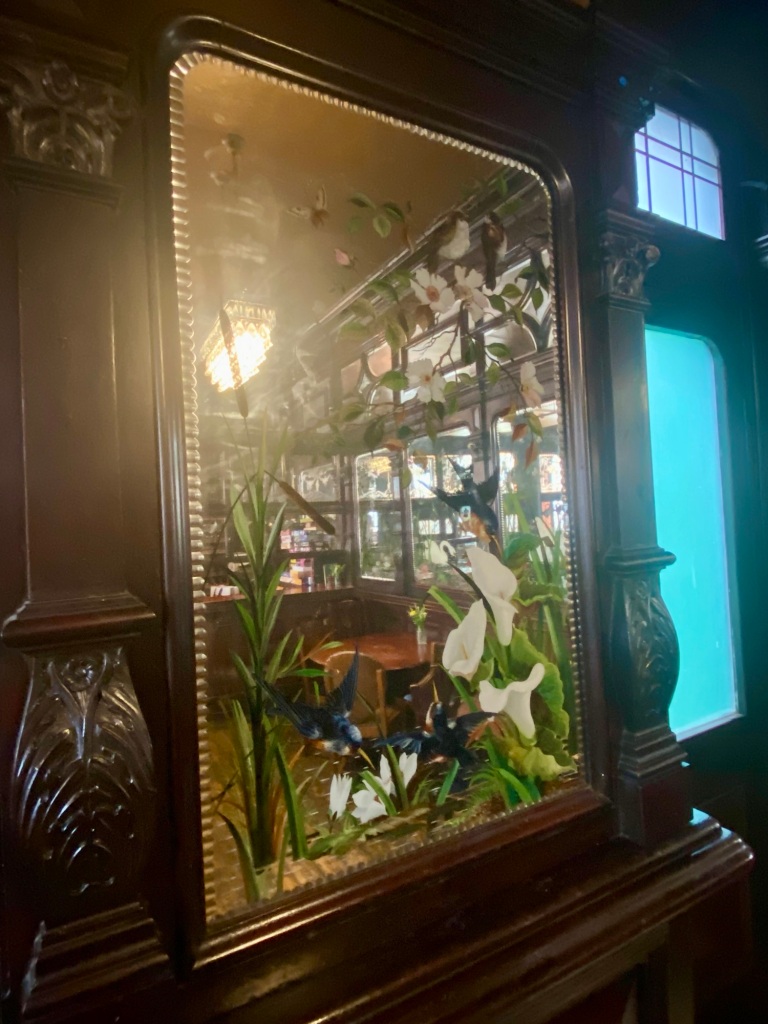


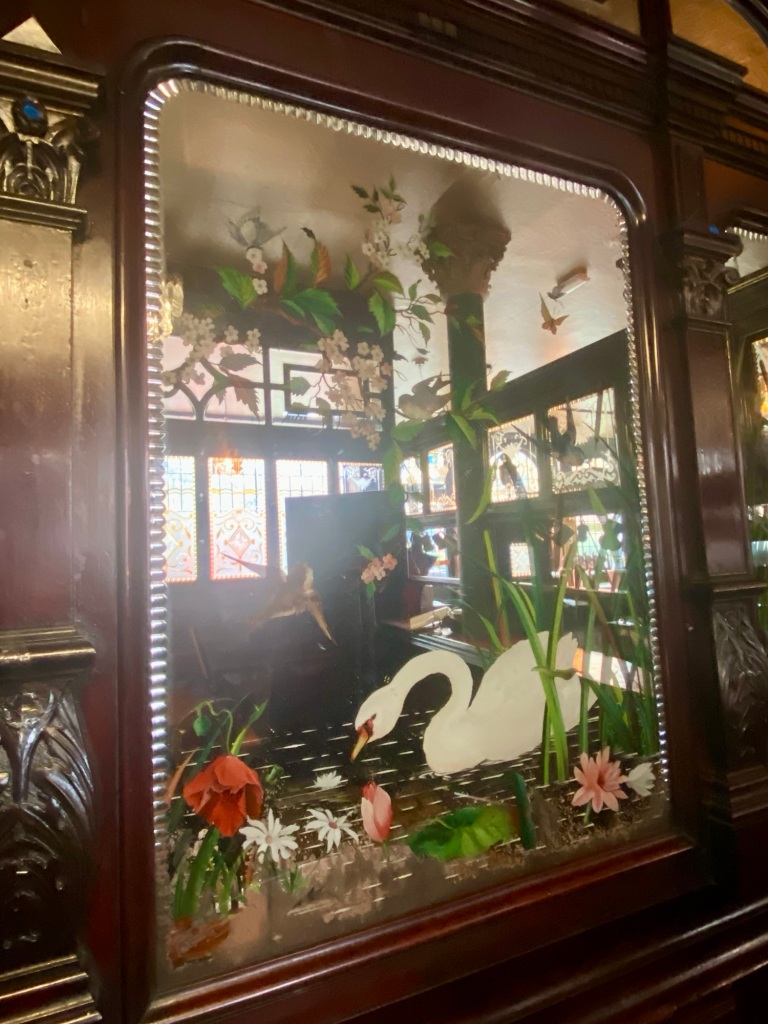
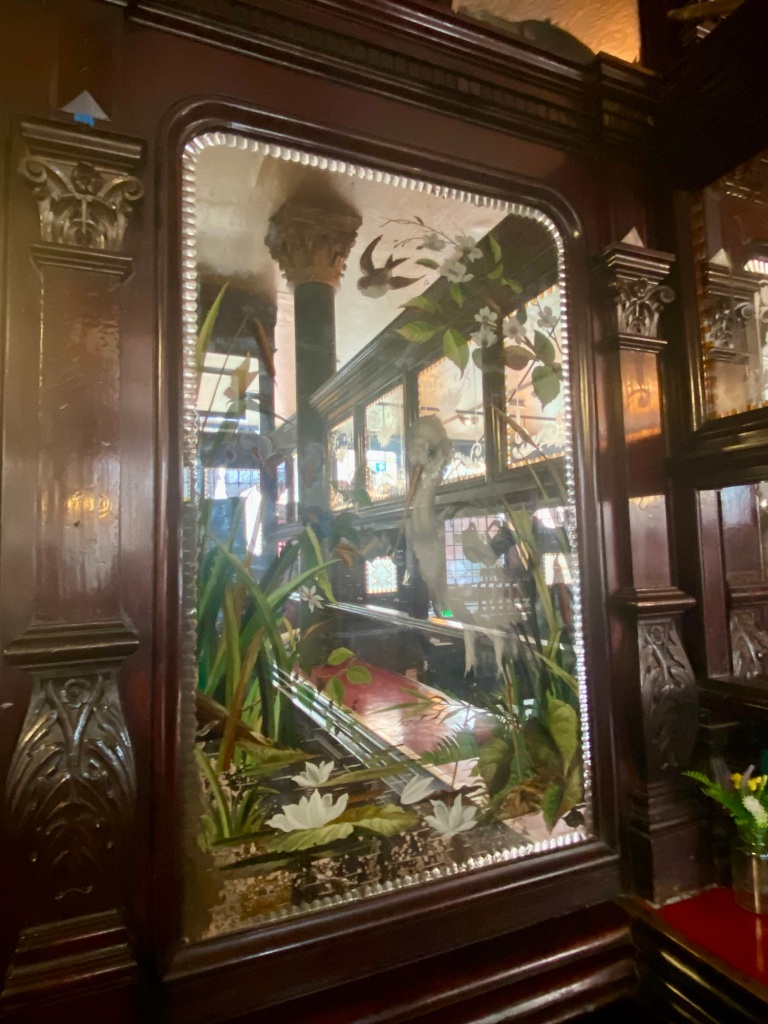
The firm has since amalgamated with another long-established business in Blackfriars, James Clark and Son Ltd. As James Clark and Eaton Ltd (with Walter Gibbs and Sons as a subsidiary) the firm is one of the few still making embossed and brilliant cut glass…
…Cakebread, Robey’s embossed and brilliant cut glass employs exactly the same motifs in very much the same manner as that of William James of Kentish Town.
The back-painted mirrors at the Half Moon and the Bunch of Grapes could easily be attributed to the same maker if the signatures did not show that they were by William James
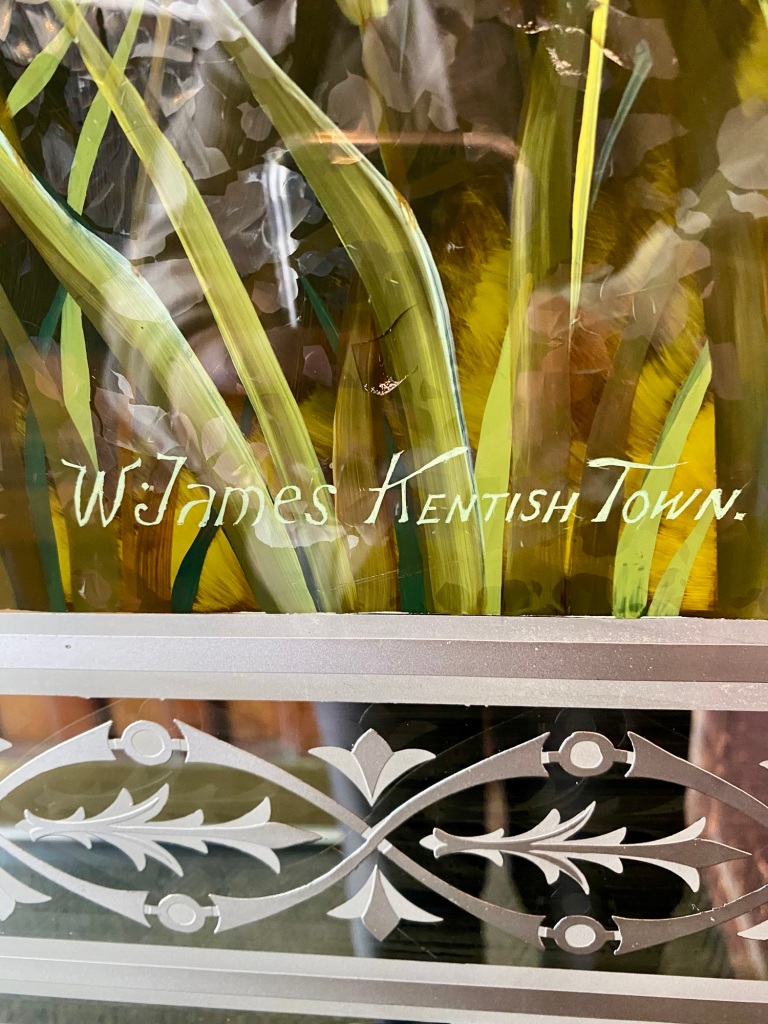
and Walter Gibbs.
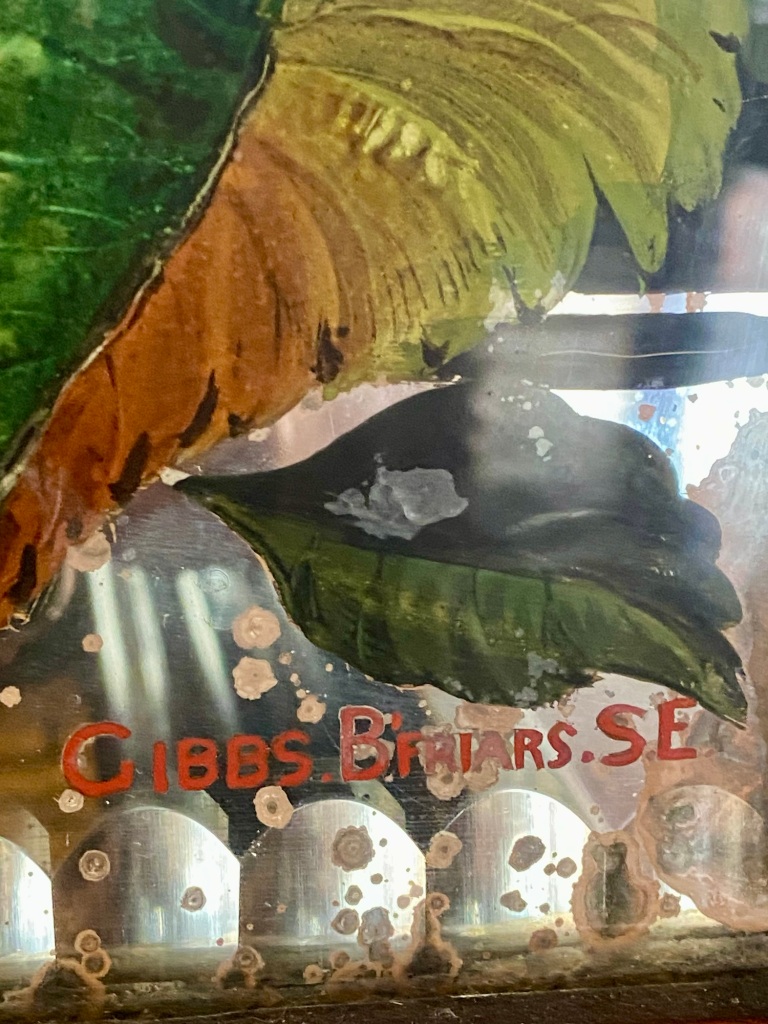
As signatures are comparatively rare and only one London catalogue, and that a late one, has so far come to light, it is impossible to say who was the pioneer and who was borrowing whose ideas…”

